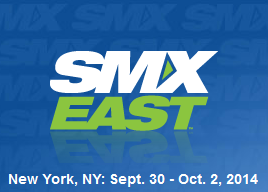 Jason White from DragonSearch.net provided a great synopsis of earning authority via link acquisition at SMX East 2014. Below is a collection of the actionable insights I took away from his presentation. They make a great basic checklist for getting into link building!
Jason White from DragonSearch.net provided a great synopsis of earning authority via link acquisition at SMX East 2014. Below is a collection of the actionable insights I took away from his presentation. They make a great basic checklist for getting into link building!
IBM recently found 2.5 Gigabytes of data are generated every day. Today, the average American reads more than ever, but we still cannot come close to digesting all of the advertising, content, and information that is thrown our way.
With an overwhelming amount of content on the web, it seems like it should be easy for a company to simply “get lots of inbound links” (a prime tactic towards improving organic search performance. Unfortunately, all content is not created equal when considering a how to build inbound links to your blog or site. Link building used to be an automated process, successful marketers would splash links all over the web and hope something was picked up. Now, search engines expect inbound links to have relevance and be of high quality (like the humans who read your site do). As search marketing continues to evolve, link building is not about in-it-to-win it all the time, but being in-it when your competitors are not.
A successful link building campaign is not about building one great link back to your site, one time. Link building is about building a relationship that can provide countless great links and provide useful information to your target audience. Here are 5 great strategies to create an link-building culture in your organization.
 #1 – Actively Pitch HARO (Help A Reporter Out)
#1 – Actively Pitch HARO (Help A Reporter Out)
Many organizations are aware of HARO, an online news portal that helps reporters find potential news opportunities. HARO is a popular service and is oftentimes hard to grab widespread attention when submitting information on behalf of your company or client. The key to success with HARO is digging deep into the segmentation of the site and finding unique niche writers. Once you have determined 1-3 areas your brand can provide newsworthy content, begin researching potential reporters who could be interested in your topic. Build HARO into your current content strategy and, when you have a great piece of content, make sure it lands in front of your niche writers.
#2 – Create a war chest of influencers
Generally, 1 in 10 content ideas are going to be worth pursuing and 1 in 100 are going to be truly excellent pieces of content. When you have your “knock-out” content piece, you should always be ready to promote. Grab the name, title, contact information, and social media accounts of key influencers in your market and organize them in an Excel document. You could also use an email marketing platform (like emfluence), to reach out to these influences social and email contacts and track who opens and engages.
#3 – Always be link building
Every second can become a link building opportunity on Twitter. Your whole team should follow influencers and be ready to grab their attention when the opportunity presents itself. “Twitter stalking” should become the hobby of any great marketing team, something you can easily do throughout the day or while watching TV at home. When an influencer mentions your industry, you can be the first to grab their attention.
#4 – Dig into “weird” social networks
When thinking about social media, most marketers target the big players like Facebook and Twitter. Everyone is attempting to gain more followers in these areas, but far fewer people are utilizing niche forums, Google+ Communities, and emerging social media. Consider unique sources, especially Google+, for finding influencers who may be extremely difficult to reach.
#5 – Attribute posts to an article’s author
Many businesses share news articles on Twitter/Facebook, but we rarely attribute the reporter for their work (instead, we generally attribute the publication). This is a quick, easy way of establishing a relationship with a reporter/blogger that could generate future link opportunities.
Link building is really about building honest relationships over a period of time. Be willing to wait until the right time to ask for a link, and provide great content worthy of being linked. Be helpful, relevant, and useful for influencers and they will provide your company with the attention you deserve.



